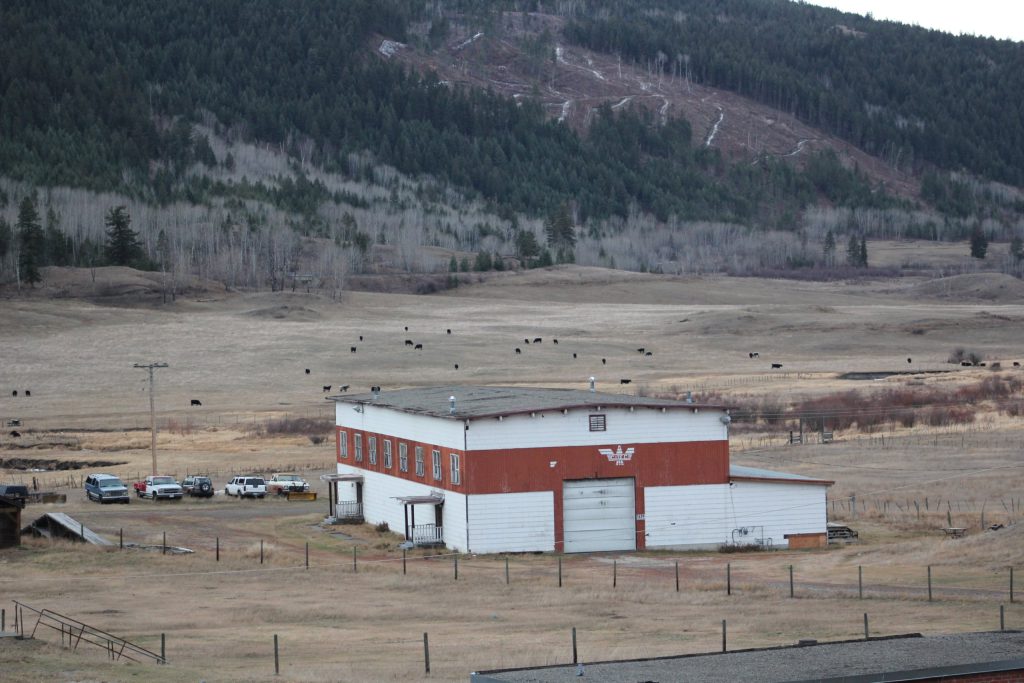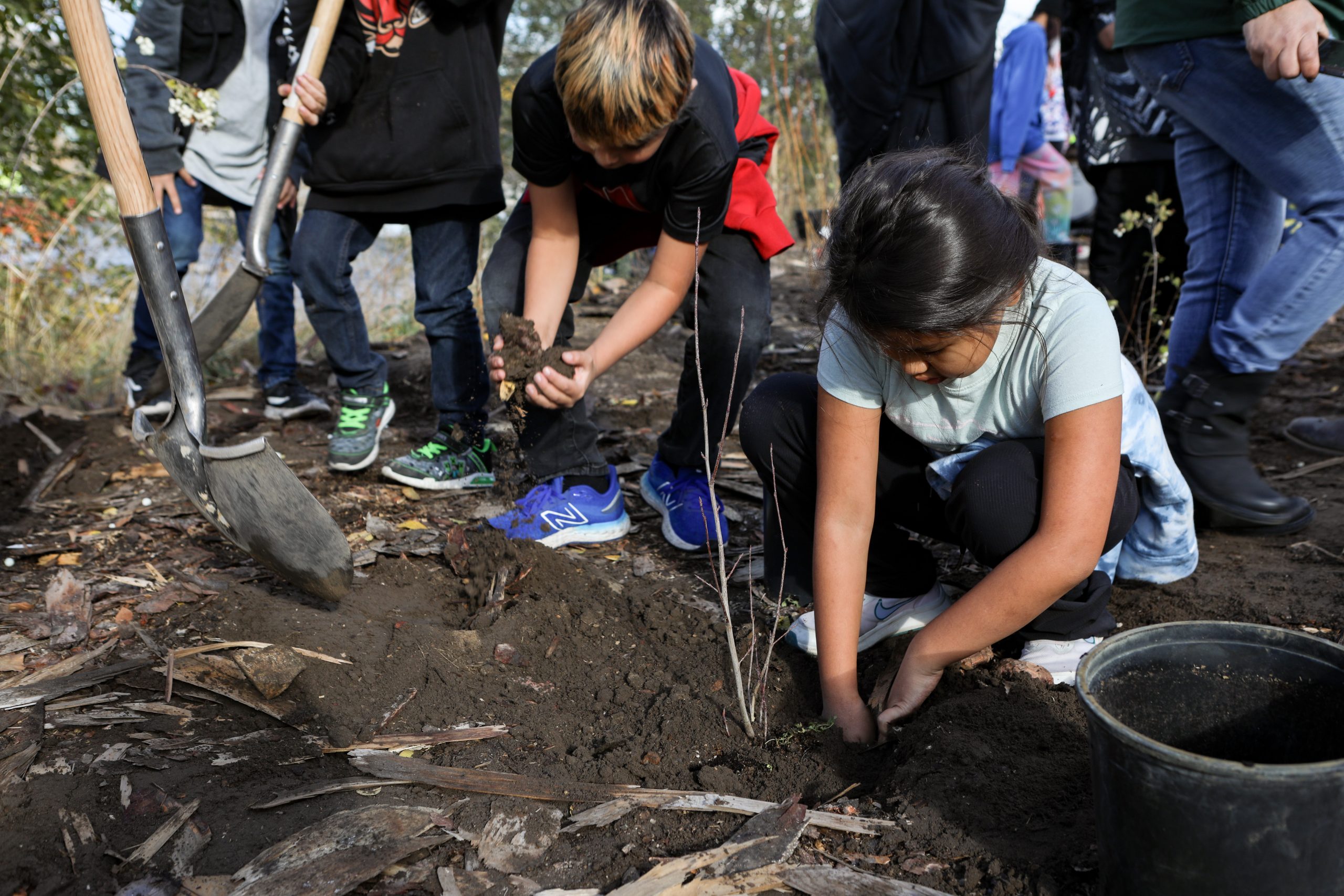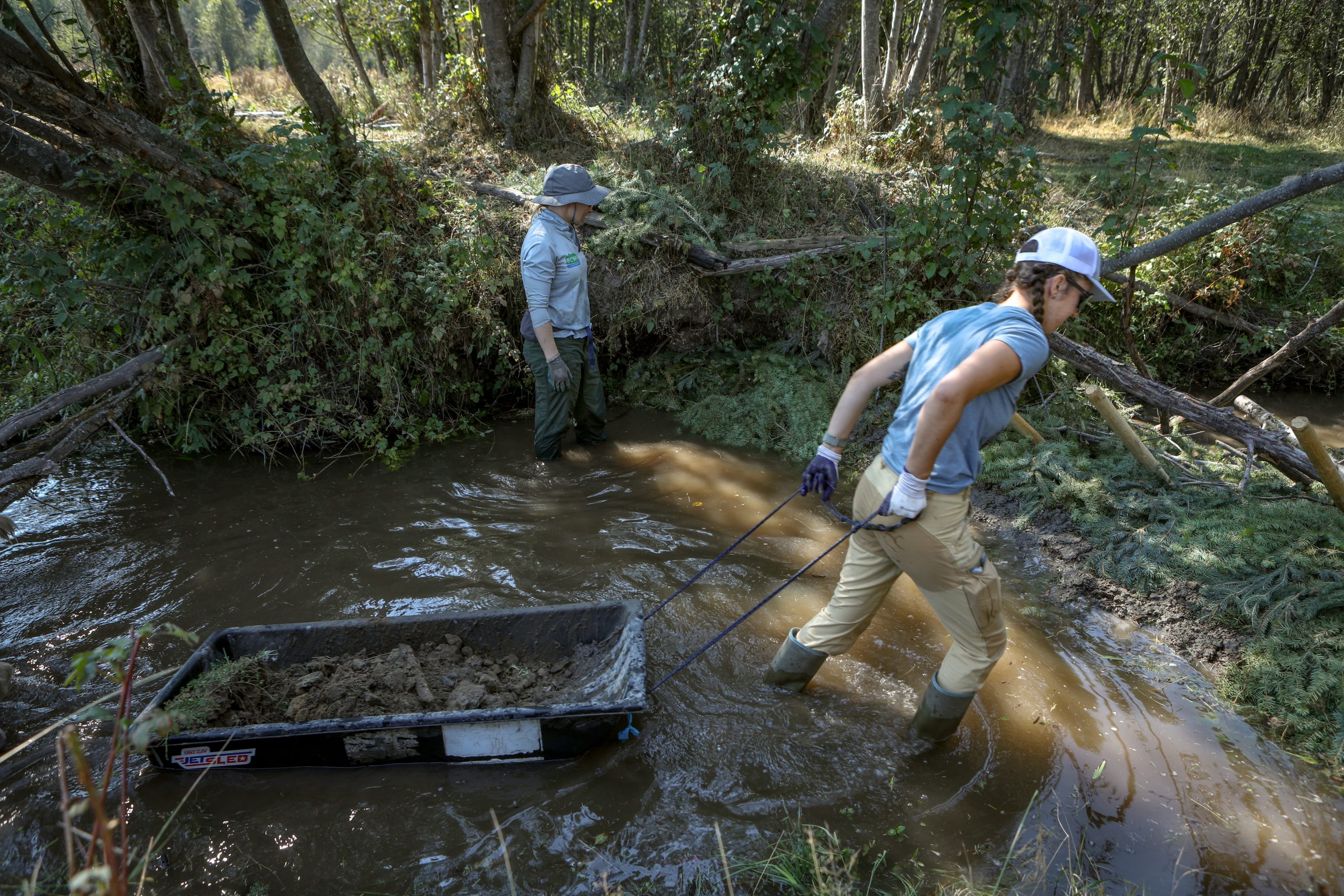By teaching Secwepemctsín, Kyé7e Minnie Phillips breathes life into the language
As a fluent speaker, my grandmother’s knowledge is invaluable to her family and the countless students who adore her


There are some Elders who are like a grandparent to everyone they know and my Kyé7e, Minnie Phillips, is one of those people.
As a fluent speaker of Secwepemctsín (the Shuswap language) and a longtime teacher of the language, she has countless former students, friends and relatives who adore her.
Often, when we’re out in public, multiple people will come up to her calling her Kyé7e, all with fondness in their eyes as they talk to her.
Kyé7e truly remembers everyone — although not their names sometimes — but she has endless stories to tell about each person that she is around.
As we sit in her house in Xats̓úll, Kyé7e settles into her comfy chair and smiles as she recalls one of her former students.
Kyé7e speaks of a young boy who was a student in her class, and would come up and talk to her all the time. One time, when the boy was 8 or 9 years old, he came out of a store and walked right up to Kyé7e while speaking Secwépemc.
She recalls the student, who is non-Indigenous, as eager to learn in the classroom, adding that he would catch on quickly to the lessons in the language.
Kyé7e is the heart of our family and we all gain so much from just being in her presence. My grandparents’ house is a safe space, it has been for all the family, friends and anyone who walks through the door.
The smell of freshly baked bread or fried bannock is reminiscent of their house on the rez. Family dinners are hosted there with no questions asked. The grandparents are involved and we all know that we gather for them.
I am grateful to have been raised around wonderful people such as my Kyé7e.
Growing up as the eldest daughter

Born in 1938, Kyé7e is one of 17 children born to parents Anastasia and Patrick Chelsea. As the oldest daughter, Kyé7e found herself as a “mother hen” helping to take care of her siblings.
When Kyé7e and her siblings were kids she says, “we had to speak Shuswap because my granny didn’t go to school, my dad didn’t go to school, my mom was the only one.”
Her granny was a fluent Secwepemctsín speaker, so talking in the language was the only way for the family to speak so that she would understand.
Kyé7e’s dad, Patrick Chelsea, did attend residential “school” for a year where he learned to write his name in English. Kyé7e says when her dad complained of the treatment after a year of “school,” he was removed by his father and continues saying that her grandfather “must be a pretty good guy” to remove his children from the institution.
As for growing up with with the traditions, Kyé7e recalls the sq̓ílye (sweat house) being the location for her family’s baths. Every Monday and Friday the kids would pack their own water to the sq̓ílye.
Before attending residential “school” Kyé7e notes that at home, “we had everything to do, we used to plant the garden then work in the garden all summer.”
She notes that she learned the traditional practices through watching her mom and granny.
In the summer the family would “ride horseback down the river, get a whole bunch of salmon, cut up fish all day.” She used to tell them “don’t get anymore than 70 or 55,” but recalls one time where her family returned with 200 salmon that she then needed to help cut up.

After cutting the meat, it would be smoked and hung in the smokehouse through the fall and winter. “It’s all hanging in there, the meat shed all winter. Nowadays you don’t even see that.”
When asked if she liked cutting up the meat, Kyé7e laughs and says she was “doing it if I like it or not.”
Even though Kyé7e makes the best bannock now, that wasn’t always the case, she says. After her mom got flour she then “put it in a bowl and we mix it trying to make some bannock when everybody was gone, me and them kids.” While laughing she says, “our bannock, we had to dig a hole and bury it, didn’t know how to make bannock.” It was her granny who then taught her to make the bannock that she still makes today.
Although she grew up in a household where Secwepemctsín was spoken fluently, there was a break in the language. At the age of 10 she was brought to the St. Joseph’s Mission where she spent five years attending “school.”
She still recalls the time it took to travel back and forth from the Mission to home. “I didn’t like to travel,” she says, adding that the trip was too long. “Especially when you’re going home for Christmas holiday. We freeze going home, sitting in the sleigh.” Even after the long trip, their dad had to pick them up in Dog Creek across the river from their home.
While at the Mission, Kyé7e remembers one sibling, Marlene, who “used to talk Indian to them nuns.” Her sisters would tell her that she needed to speak English while in the “school.”
Her dad told the children they needed to attend school until they got a job. At 15, Kyé7e got a job as a housekeeper which allowed her to quit attending St. Joseph’s Mission.

After spending four and a half years at the “school,” Kyé7e had “come home for Christmas holiday and never went back because I was working through the holidays. They got me down the ranch to clean up the bunkhouse and everything.”
She had learned English in the “school” allowing her to work in English-speaking establishments, but also held on to Secwepemctsín.
Kyé7e continued to work over the years, even returning to the Mission as a cook at the age of 18 or 19. She says they always needed cooks to feed the 300 children.
She worked until marrying my Xpé7e in 1964. After getting married, Kyé7e transferred over to Xats̓úll First Nation from Esk’etemc First Nation. Kyé7e recalls knowing Xpé7e at the Mission but says they just went their own ways until many years later when they reconnected in 1962.
Few fluent speakers left but many learners
Kyé7e is one of the few fluent Secwepemctsín speakers who continue to practice the language. According to the 2022 First Peoples Cultural Council (FPCC) language report, in the 16 Secwépemc bands, only 1.6 per cent of the population are fluent Secwepemctsín speakers.
Starting in 1978, Kyé7e began teaching the language. Her granny was the one who taught her the language, but she was still required to attend Secwepemctsín classes for a teacher’s certificate.
Kyé7e credits Cecilia DeRose for “dragging” her into the Secwépemc classes. In these classes they were supposed to learn to write in the language but she recalls using the language knowledge she learned from her granny to show that she was fluent and received her certificate. “My granny didn’t teach me to write it, just how to say it” she says.
“It was 17 of us going to Shuswap school, supposed to learn how to spell it and everything.” She adds the aspiring teachers were mostly from Esk’etemc.
As a committed teacher, Kyé7e notes, “I enjoyed every bit of it.”
Throughout her teaching career, Kyé7e moved from Wildwood Elementary School to Marie Sharpe and then back. She continued to work in schools until she turned 65 and was made to retire.
She continues to work with all ages throughout the Secwépemc communities, from the Youth programs on the Xats̓úll reserve to the university-level programs in Tk̓emlúps te Secwépemc (TteS).
The FPCC report also notes that 15.9 per cent of the Secwépemc Nation population are actively learning the language.
TteS is working to increase the younger generations’ fluency, with programs such as the Me7 Texwtuxwtsínem-kt which is a collaboration with Simon Fraser University (SFU) and TteS. The program regularly brings in Elders who mentor and guide their work while providing a space for Elders to visit and converse in Secwepemctsín.
The program relies on the Elders’ knowledge and ensures the Elders are involved in decision making and the development of Secwépemc programming while also providing new words and phrases to learn.
There are multiple dialects of Secwepemctsín within the 16 bands. Within the different regions there are different sounds for the same word, which the participants learn through the Elder visits.
Throughout the years Kyé7e is still set in her ways, saying: “I don’t care whether I spell it or not, as long as I can speak it.”

Language has always been a constant in each grandchild’s life. The minute you enter Kyé7e’s house you hear the language. Sometimes it could be just a few words, or there could be a visitor who converses in Secwepemctsín.
My brothers, who have grown up in a house down the street from my grandparents, didn’t even realize that some words we use are Secwépemc words. Since they have always been included in their vocabulary, they counted them as English.
Kyé7e notes it’s common for kids to not know they’re learning Secwepemctsín, “some of them, they can catch on easy and they figure it’s an English word. But when it’s a Shuswap word, they figure it’s a hard word.”
It’s these moments of realization that through the constant use of our traditional language the children are learning without thinking about it. That sets in how important any conversations in the language are. Even if it’s just an addition to an English sentence, it’s something. As long as we start small, there’s learning happening.
“There’s lots to learn,” Kyé7e says, adding that “I think it’s better to start with them little kids.” She says that you need to start talking to them in Secwepemctsín so when they’re listening to you they can begin to understand the language.
She says that she has children tell her ‘we learned this already’ but as she’s teaching them she is solidifying the language for them, as repetitive as it can be. From there she will continue teaching harder words and notes, sometimes it’s not very hard for the kids, it’s easy for them to pick up the new teachings when they’ve heard the words enough times.
Humour and resilience

Living back at home, I’ve had the opportunity to attend more events with my grandparents. In November we all attended the 2023 Secwepemctsín Language Conference. It was four days of fluent Secwepemctsín.
During one story that Elder Irvine Johnson was telling entirely in Secwepemctsín, I looked at my grandparents and they were cracking up. The story was about a peacekeeper who ended up going down the river in a rock canoe, and that hit my Kyé7e and Xpé7e’s funny bone. Tears were coming out of their eyes because they were laughing so hard.
Although I’ve seen them laugh many times, this felt different. Hearing this pure laughter come from a Secwépemc story that’s fully spoken in our language was such a great sight to see.
That in itself was a show of resilience. It showed the language is still present, it can evoke emotion. Even though my Xpé7e, aunty and I do not speak Secwepemctsín fluently we had my Kyé7e to rely on and she translated some of the story for us.
Growing up, I spent many days at my grandparents’ house. I seemed to have a lot of “sick” days when I was there. My mom used to tell me she’d rather I spend a day learning from my grandparents than in a public school so I made use of that. It’s true that I learned so much just by being in their presence.
My grandparents have always been and continue to be my favourite people. Their knowledge is unmatched and as they pass it down through storytelling I’m thrilled that their stories get to pass through me, too.
Us family members and the countless other honorary grandchildren who have learned from Kyé7e are all lucky to hold her stories.
Author
Latest Stories
-
‘Bring her home’: How Buffalo Woman was identified as Ashlee Shingoose
The Anishininew mother as been missing since 2022 — now, her family is one step closer to bringing her home as the Province of Manitoba vows to search for her
-
Amid climate impacts, leading Secwépemc firekeeper shares ‘a better way of looking after the land’
In a time of worsening wildfires, Joe Gilchrist says cultural burning ‘needs to be multiplied hundreds of times’ — returning to Indigenous stewardship












